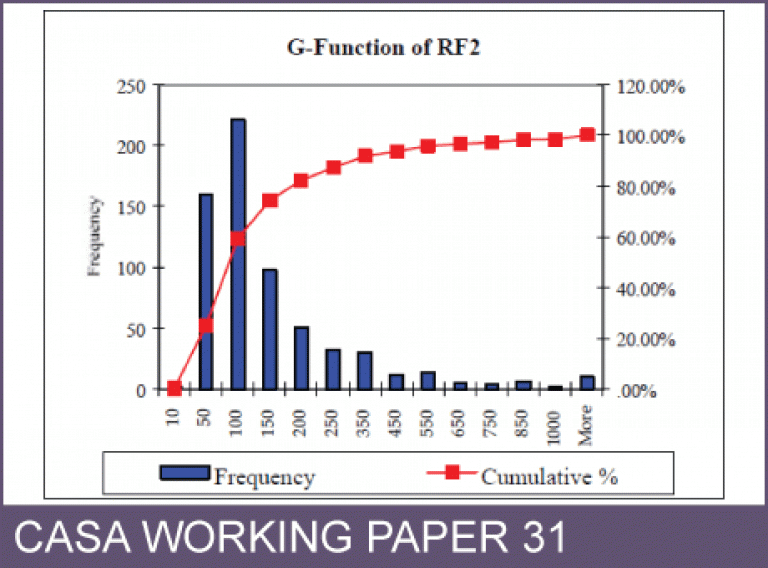CASA Working Paper 31

1 July 2001
Visual and Interactive Exploration of Point Data
Point data, such as Unit Postcodes (UPC), can provide very detailed information at fine scales of resolution. For instance, socio-economic attributes are commonly assigned to UPC. Hence, they can be represented as points and observable at the postcode level. Using UPC as a common field allows the concatenation of variables from disparate data sources that can potentially support sophisticated spatial analysis. However, visualising UPC in urban areas has at least three limitations. First, at small scales UPC occurrences can be very dense making their visualisation as points difficult. On the other hand, patterns in the associated attribute values are often hardly recognisable at large scales. Secondly, UPC can be used as a common field to allow the concatenation of highly multivariate data sets with an associated postcode. Finally, socio-economic variables assigned to UPC (such as the ones used here) can be non-Normal in their distributions as a result of a large presence of zero values and high variances which constrain their analysis using traditional statistics.
This paper discusses a Point Visualisation Tool (PVT), a proof-of-concept system developed to visually explore point data. Various well-known visualisation techniques were implemented to enable their interactive and dynamic interrogation. PVT provides multiple representations of point data to facilitate the understanding of the relations between attributes or variables as well as their spatial characteristics. Brushing between alternative views is used to link several representations of a single attribute, as well as to simultaneously explore more than one variable. PVT's functionality shows how the use of visual techniques embedded in an interactive environment enable the exploration of large amounts of multivariate point data.
This working paper is available as a PDF. The file size is 685KB.
Authors: Carolina Tobon
Publication Date: 1/3/2001
 Close
Close

